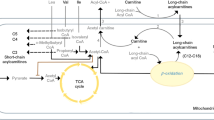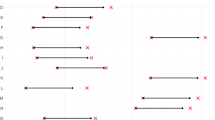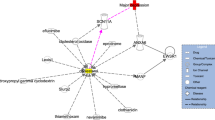Abstract
This work studies association between relapse during acute tryptophan depletion (ATD) and CSF level of tryptophan (TRP) in remitted depressives treated with sertraline or bupropion. Eight medication-responding depressives ingested an ATD amino acid mixture during 48-h continuous CSF sampling before and after treatment. Mood rating scores were compared with nadir levels of TRP in CSF. CSF TRP nadirs averaged 8.7% of am baselines in remitted patients. Mood relapsed whenever the CSF nadir was below 40 nmol/l TRP in remitted patients, and never when above (Fisher's exact test, P=0.029). Relapsing medication responders also showed very low preantidepressant ATD-induced nadirs. ATD-induced relapses were associated with low CSF TRP levels. Individual susceptibility to depletion may be independent of antidepressant treatment, mood state, or treatment status. Resistance to relapse may invoke an undefined, protective CNS mechanism against extremely low CSF levels of TRP during ATD.
Similar content being viewed by others
Log in or create a free account to read this content
Gain free access to this article, as well as selected content from this journal and more on nature.com
or
References
Abbott FV, Etienne P, Franklin KB, Morgan MJ, Sewitch MJ, Young SN (1992). Acute tryptophan depletion blocks morphine analgesia in the cold-pressor test in humans. Psychopharmacology (Berl) 108: 60–66.
Agren H (1980). Symptom patterns in unipolar and bipolar depression correlating with monoamine metabolites in the cerebrospinal fluid: II. Suicide. Psychiatry Res 3: 225–236.
American Psychiatric Association (1994). Diagnostic and Statistical Manual of Mental Disorders, 4th edn. American Psychiatric Association: Washington, DC.
Ascher JA, Cole JO, Colin JN, Feighner JP, Ferris RM, Fibiger HC et al (1995). Bupropion: a review of its mechanism of antidepressant activity. J Clin Psychiatry 56: 395–401.
Benkelfat C, Seletti B, Palmour RM, Hillel J, Ellenbogen M, Young SN (1995). Tryptophan depletion in stable lithium-treated patients with bipolar disorder in remission. Arch Gen Psychiatry 52: 154–156.
Bruce JN, Oldfield EH (1988). Method for sequential sampling of cerebrospinal fluid in humans. Neurosurgery 23: 788–790.
Carpenter LL, Anderson GM, Pelton GH, Gudin JA, Kirwin PD, Price LH et al (1998). Tryptophan depletion during continuous CSF sampling in healthy human subjects. Neuropsychopharmacology 19: 26–35.
Delgado PL, Charney DS, Price LH, Aghajanian GK, Landis H, Heninger GR (1990). Serotonin function and the mechanism of antidepressant action. Reversal of antidepressant-induced remission by rapid depletion of plasma tryptophan. Arch Gen Psychiatry 47: 411–418.
Delgado PL, Miller HL, Salomon RM, Licinio J, Krystal JH, Moreno FA et al (1999). Tryptophan-depletion challenge in depressed patients treated with desipramine or fluoxetine: implications for the role of serotonin in the mechanism of antidepressant action. Biol Psychiatry 46: 212–220.
Delgado PL, Price LH, Miller HL, Salomon RM, Aghajanian GK, Heninger GR et al (1994). Serotonin and the neurobiology of depression. Arch Gen Psychiatry 51: 865–874.
Delgado PL, Price LH, Miller HL, Salomon RM, Licinio J, Krystal JH et al (1991). Rapid serotonin depletion as a provocative challenge test for patients with major depression: relevance to antidepressant action and the neurobiology of depression. Psychopharmacol Bull 27: 321–330.
Dong J, Blier P (2001). Modification of norepinephrine and serotonin, but not dopamine, neuron firing by sustained bupropion treatment. Psychopharmacology (Berl) 155: 52–57.
Ferris RM, Cooper BR, Maxwell RA (1983). Studies of bupropion's mechanism of antidepressant activity. J Clin Psychiatry 44: 74–78.
First MB, Spitzer RL, Gibbon M, Williams JBW (1996a). Structured Clinical Interview for DSM-IV Axis I Disorders (SCID-I/P) 2. Biometrics Research Department, New York State Psychiatric Institute: New York.
First MB, Spitzer RL, Gibbon M, Williams JBW, Benjamin L (1996b). Structured Clinical Interview for DSM-IV Axis II Disorders (SCID-II) 2. Biometrics Research Department, New York State Psychiatric Institute: New York.
Kennedy JS, Polinsky RJ, Johnson B, Loosen P, Enz A, Laplanche R et al (1999). Preferential cerebrospinal fluid acetylcholinesterase inhibition by rivastigmine in humans. J Clin Psychopharmacol 19: 513–521.
Lenzinger E, Neumeister A, Praschak-Rieder N, Fuchs K, Gerhard E, Willeit M et al (1999). Behavioral effects of tryptophan depletion in seasonal affective disorder associated with the serotonin transporter gene? Psychiatry Res 85: 241–246.
Leyton M, Young SN, Benkelfat C (1997). Relapse of depression after rapid depletion of tryptophan. Lancet 349: 1840–1841.
Mazure CM, Nelson JC, Price LH (1986). Reliability and validity of the symptoms of major depressive illness. Arch Gen Psychiatry 143: 35–39.
Moore P, Landolt H-P, Seifritz E, Clark C, Bhatti T, Kelsoe J et al (2000). Clinical and physiological consequences of rapid tryptophan depletion. Neuropsychopharmacology 23: 601–622.
Moreno FA, Heninger GR, McGahuey CA, Delgado PL (2000a). Tryptophan depletion and risk of depression relapse: a prospective study of tryptophan depletion as a potential predictor of depressive episodes. Biol Psychiatry 48: 327–329.
Moreno FA, McGavin C, Malan P, Gelenberg AJ, Heninger GR, Mathe AA et al (2000b). Tryptophan depletion selectively reduces CSF 5-HT metabolites in healthy young men: results from single lumbar puncture sampling technique. Int J Neuropsychopharmacology 3: 277–283.
Moroni F (1999). Tryptophan metabolism and brain function: focus on kynurenine and other indole metabolites. Eur J Pharmacol 375: 87–100.
Neumeister A, Konstantinidis A, Stastny J, Schwarz M, Vitouch O, Willeit M et al (2002). An association between serotonin transporter gene promotor polymorphism (5-HTTLPR) and behavioral responses to tryptophan depletion in healthy women with and without family history of depression. Arch Gen Psychiatry. 59: 613–620.
Nishizawa S, Benkelfat C, Young SN, Leyton M, Mzengeza S, de Montigny C et al (1997). Differences between males and females in rates of serotonin synthesis in human brain. Proc Natl Acad Sci USA 94: 5308–5313.
Salomon RM, Delgado PL, Miller HL, Charney DS (1992). Tryptophan depletion studies in psychiatric disorders. Psyche 1: 7–16.
Salomon RM, Miller HL, Delgado PL, Charney D (1993). The use of tryptophan depletion to evaluate central serotonin function in depression and other neuropsychiatric disorders. Int Clin Psychopharmacol 2 (Suppl): 41–46.
Salomon RM, Miller HL, Krystal JH, Heninger GR, Charney DS (1997). Lack of behavioral effects of monoamine depletion in healthy subjects. Biol Psychiatry 41: 58–64.
Schmidt DE, Roznoski ML, Ebert MH (1990). Qualitative and quantitative HPLC analysis of monoamine neurotransmitters and metabolites in CSF and brain tissue using reductive electrochemical detection. Biomed Chromotogr 4: 215–221.
Williams WA, Shoaf SE, Hommer D, Rawlings R, Linnoila M (1999). Effects of acute tryptophan depletion on plasma and cerebrospinal fluid tryptophan and 5-hydroxyindoleacetic acid in normal volunteers. J Neurochem 72: 1641–1647.
Acknowledgements
We gratefully acknowledge assistance and comments from Sidney Spector, PhD, Fridolin Sulser, MD, and Pedro L Delgado, MD in early planning and execution of this work; support of the Vanderbilt General Clinical Research Center through a grant from NIH/HCRR (MO1RR00095) awarded to Vanderbilt University Medical Center, Nashville, TN; and for investigator-initiated funding from Pfizer, Inc. Statistical assistance from Daniel Byrne, MS at the Vanderbilt GCRC is greatly appreciated. Support from the Stanley Foundation and a NARSAD young investigator's award to RMS for parallel, closely related studies are also acknowledged and appreciated.
Author information
Authors and Affiliations
Corresponding author
Additional information
Presented, in part, in meeting abstracts at APA, Toronto, May 1998, and American College of Neuropsychopharmacology, Puerto Rico, December 1998.
Rights and permissions
About this article
Cite this article
Salomon, R., Kennedy, J., Johnson, B. et al. Association of a Critical CSF Tryptophan Threshold Level with Depressive Relapse. Neuropsychopharmacol 28, 956–960 (2003). https://doi.org/10.1038/sj.npp.1300098
Received:
Revised:
Accepted:
Published:
Issue date:
DOI: https://doi.org/10.1038/sj.npp.1300098



